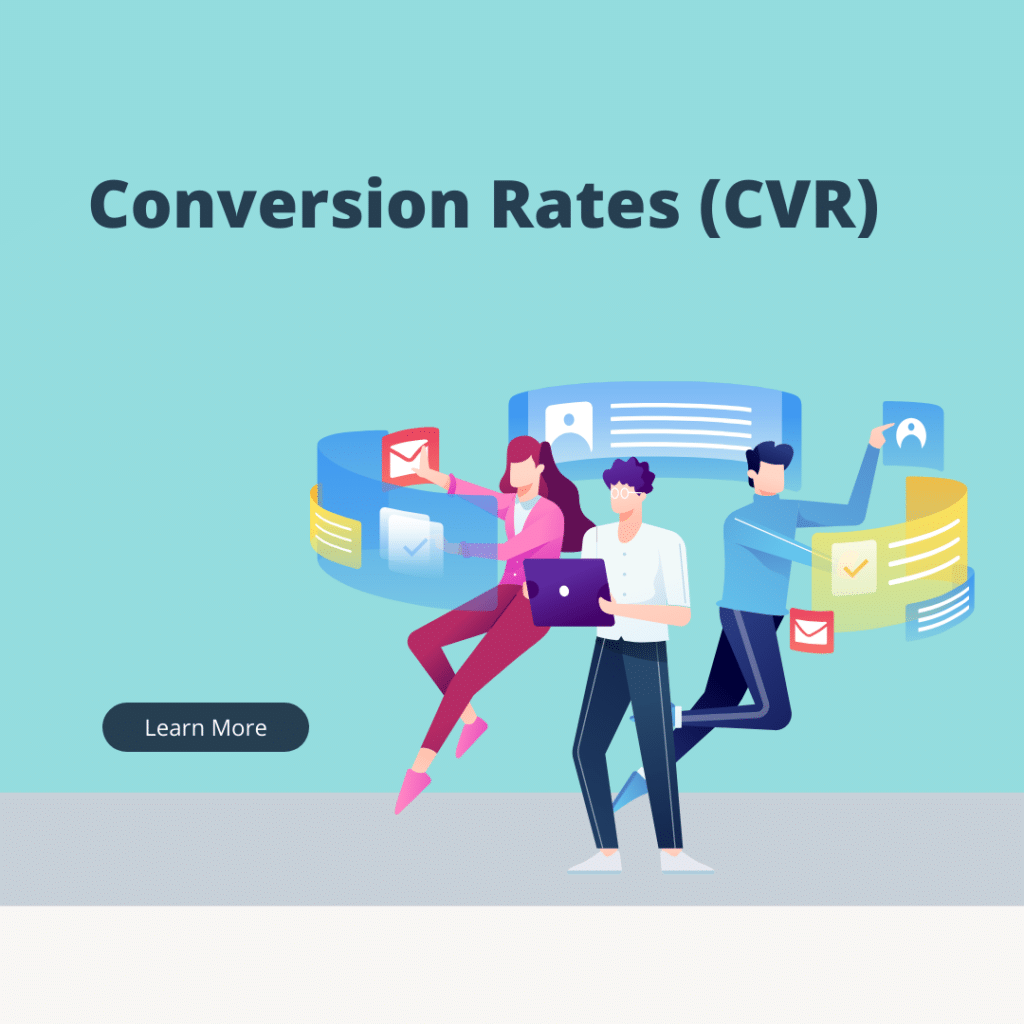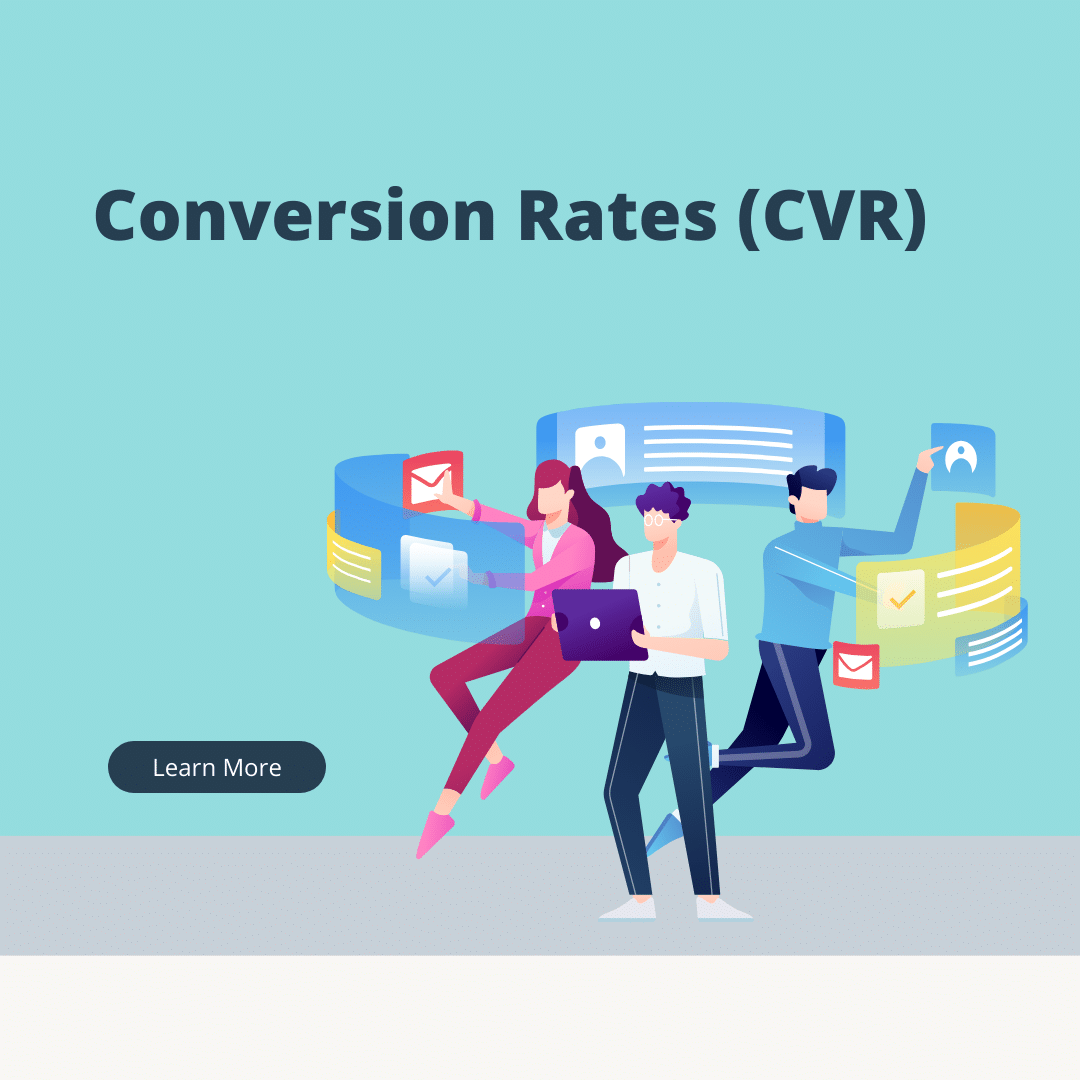What is CVR in Digital Marketing: Unlocking the Power of Conversion Rates

In the dynamic world of digital marketing, the quest for success revolves around a multitude of metrics, and one of the most critical among them is Conversion Rate (CVR). It is short for Conversion Rate and is a key performance indicator (KPI); playing a central role in evaluating the effectiveness of digital marketing campaigns.
In this blog post we will delve into “what is CVR in Digital Marketing”- looking into why it is crucial, how to calculate it, and strategies to improve it. Whether you’re a seasoned marketer or just starting in the digital realm, understanding CVR is essential for achieving your marketing goals.
So What Is CVR in Digital Marketing?
The Conversion Rate is often abbreviated as CVR and is a fundamental metric used in digital marketing to measure the success of a specific action or goal completion on a website or landing page. Simply put, CVR indicates the percentage of website visitors who take a desired action, such as making a purchase, signing up for a newsletter, filling out a contact form, or downloading an e-book. In essence, CVR quantifies how effective your digital marketing efforts are at turning visitors into customers or leads.
Importance of CVRs
Conversion Rate is a vital metric in digital marketing for several compelling reasons:
Performance Evaluation: CVR provides a tangible measure of how well your digital marketing campaigns are performing. It goes beyond vanity metrics like website traffic- providing us insights into the quality of that traffic and its ability to convert into valuable actions.
ROI Measurement: Calculating CVR helps marketers assess the return on investment (ROI) of their campaigns. Understanding the percentage of visitors who convert into customers or leads is of vast importance- it can help you determine the cost-effectiveness of your marketing efforts!
Campaign Optimization: CVR allows marketers to identify underperforming aspects of their campaigns. This is because when you know where potential customers drop off in the conversion funnel, you can then make the correct data-driven adjustments, helping you optimize your strategies and maximize results.
Goal Alignment: Every digital marketing campaign has specific objectives, whether it’s increasing sales, generating leads, or boosting website engagement. CVR directly aligns with these objectives- making it a critical metric for tracking progress toward your goals.
Resource Allocation: By monitoring CVR, you can allocate your resources more efficiently. You can focus your efforts on channels, content creation, or strategies that consistently deliver higher conversion rates— thereby maximizing your marketing budget.
Calculating the Conversion Rate
Calculating CVR is a straightforward process. It involves determining the number of conversions and the total number of visitors to your campaign/page. Here’s the formula for calculating CVR:

Let’s break down the steps:
Number of Conversions: This is the total number of desired actions completed on your website or landing page during a specific period. For example, if you run an e-commerce site, it could be the number of completed purchases. If you’re promoting a newsletter sign-up, it would be the number of new subscribers.
Total Number of Visitors: This refers to the overall traffic or visitors to the webpage or campaign during the same period. You can easily obtain this data from web analytics tools; these include Google Analytics and Google Search Console.
Multiplying by 100: This step converts the ratio into a percentage, which is the standard way to express CVR.
For example, if your e-commerce website received 1,000 visitors in a month, and 50 of them made a purchase, your CVR would be:

Your CVR, in this case, is 5%, indicating that 5% of the website visitors converted into customers.
CVR Strategies
Now that we’ve covered what CVR is and why it’s important, let’s explore strategies to improve your conversion rate in digital marketing:
A/B Testing: Conduct A/B tests to experiment with different variations of landing pages, ad copies, images, and calls-to-action (CTAs). Analyze which elements resonate better with your audience and result in higher conversions.
Optimize Website Speed: Slow-loading websites can frustrate visitors and lead to higher bounce rates. It is important to ensure that your website loads quickly on mobile devices as well as desktops to keep users engaged.
Responsive Design: Make sure your website is mobile-responsive, as an increasing number of users access websites via smartphones and tablets.
Compelling Copywriting: Craft persuasive and clear copy that communicates the value proposition of your product or service. Use action-oriented language in CTAs to encourage conversions.
Simplify Forms: If your goal is lead generation, keep contact forms simple and request only essential information.
Use Trust Signals: Display trust signals like customer reviews, security badges, and endorsements from reputable sources to build credibility and trust with your audience.
Implement Retargeting: Use retargeting campaigns to re-engage visitors who have previously shown interest in your product or service. Remarketing ads can remind them to complete the desired action.
Personalization: Tailor your content and offers to individual user preferences and behaviors- personalized experiences can significantly boost CVR.
Clear Value Proposition: Ensure that visitors understand the value they will receive by taking the desired action. Clearly communicate benefits and advantages.
Monitor and Analyze: Continuously monitor CVR and use analytics tools to gain insights into user behavior- It is important to identify patterns and trends that can inform your optimization efforts.
At the end of the day the Conversion Rate (CVR) is a pivotal metric in digital marketing that measures the success of turning website visitors into customers or leads. It is essential for evaluating the effectiveness of digital marketing strategies and campaign. This it means assessing ROI and optimizing strategies for better results for your overall campaign strategy.
By understanding what CVR is and implementing the strategies outlined in this guide digital marketers everywhere can drive higher conversions and achieve their goals in the ever-evolving landscape of online marketing. Remember that improving CVR is an ongoing process- using data-driven insights will be your most valuable asset in this journey toward digital marketing success!


